Is there Evidence for the Big Bang?
Table of Contents
Big Bang Key Points
- Hubble‘s law (redshift of galaxies) and the Doppler effect provide direct evidence for the universe expanding away from our reference point, implying the universe is expanding.
- Low temperatures due to expansion from initial high temperatures at the Big Bang, supported by radio astronomy signals from stars, galaxies, radio galaxies, quasars, and pulsars.
- Cosmic Microwave Background (CMB) was discovered by Penzias and Wilson in 1965, an average temperature of 2.7K (Kelvin) above absolute zero, evidence of the Big Bang.
- NASA‘s WMAP mission established the universe age of 13.7 billion years and looked back to 375,000 years after the Big Bang.
- The abundance of light elements produced by stellar nucleosynthesis of helium and carbon provides a simple, powerful test of the existence of the Big Bang.
- Primary constituents of matter: photons, protons, neutrons, electrons, positrons, neutrinos, antineutrinos.
- The universe was opaque until recombination released photons creating the CMB which provides evidence of the Big Bang.
Evidence for the big bang can be provided from observational astronomy using Hubble’s law (redshift of galaxies) also known as the ‘Doppler effect’ (Roy et al 2003) where the wavelength of light from distant galaxies is shifted towards the red end of the visible spectrum and results from receding galaxies. Hubble published his observations in 1929. It provides direct evidence that the galaxies in the universe are accelerating away from our reference point and implies that the universe is expanding (figure 1).

Figure 1: Expanding universe. Credit: Wikipedia Big Bang.
This expansion has resulted in lower temperatures as the universe expanded compared to the initial high temperatures at the Big Bang. Radio astronomy has contributed significantly in providing evidence of the Big Bang by detecting radio signals from stars, galaxies, radio galaxies, quasars, and pulsars way back to the singularity or the Big Bang (Kaviraj, S. 2013).
The presence of cosmic microwave background (CMB) is an indication of the big bang. Penzias and Wilson discovered the CMB in 1965. In 1992 the COBE (Cosmic Background Explorer) satellite observed fluctuations in the CMB, this explains why the universe, formed into galaxies and stars. Today the average temperature of the CMB is approximately 2.7K (Kelvin) above absolute zero (-273.15°C) and is an echo of the Big Bang. This is because the radiation was emitted at a time when the universe was at a temperature of 3000K (May et al 2012).
NASA’s WMAP (Wilkinson Microwave Anisotropy Probe) explorer (figure 2) mission, was launched in 2001 to study the properties of the universe. WMAP established the age of the universe to a high degree of accuracy and determined the density of atoms that occupy space, WMAP has established the universe’s age of 13.7 billion years and has looked back to 375,000 years after the Big Bang.

Figure 2: Wilkinson Microwave Anisotropy Probe (WMAP) data of the Cosmic Microwave Background (CMB). Credit NASA.
The abundance of light elements produced by stellar nucleosynthesis of helium from protons and of carbon from helium which both occur in the center of stars at very high temperatures is an indicator of the ‘big bang’. This process was discussed (May et al 2012) as being the most simple and powerful test of the existence of the big bang. If an observation showed less helium in the universe than expected then the Big Bang model would have to be revised however no such observation has been detected to date.
The primary constituents of matter are photons (light particles), protons and neutrons, electrons and their antiparticles (positrons), neutrinos, and their antiparticles (antineutrinos) which have been detected in particle accelerators.
During the early stages following the Big Bang the universe was opaque until recombination released photons creating the CMB which provides the evidence for the ‘Big Bang’ we see today.
So in less than 70 years, we went from no knowledge to what we have today.
FAQ
What is the Big Bang?
The Big Bang is the scientific theory that explains the origin of the universe. It states that the universe began from an infinitely dense and hot state about 13.8 billion years ago and has been expanding ever since.
What evidence supports the Big Bang theory?
The Big Bang theory is supported by numerous observations, such as the cosmic microwave background radiation, the abundance of light elements, the Hubble redshift, and the large–scale structure of the universe.
What is the Cosmic Microwave Background Radiation?
The Cosmic Microwave Background Radiation (CMBR) is a form of electromagnetic radiation that is a remnant of the Big Bang. It is an almost uniform glow across the sky that has been measured in all directions. This radiation is evidence that the universe was once in a hot, dense state.
How did the Big Bang change the universe?
he Big Bang changed the universe by expanding it, cooling it, and filling it with matter and energy. As the universe expanded, matter and energy spread throughout and eventually formed the galaxies, stars, and planets we observe in the present day.
Is the Big Bang still happening?
No, the Big Bang occurred about 13.8 billion years ago and is not still happening. However, the universe is still expanding, and the effects of the Big Bang are still being felt today.
References
Clarke, D. Roy, A. E. Astronomy: ‘Principles and Practice’ (2003), (4th ed), Institute of Physics Publishing, Bristol and Philadelphia.
Kaviraj, S. “The significant contribution of minor mergers to the cosmic star formation budget” (Printed 2nd October 2013, arXiv paper 1310:0007), Centre for Astrophysics Research, University of Hertfordshire, College Lane, Hatfield, Herts, AL10 9AB, UK.
Lintott, C. May, B. Moore, P. ‘Bang!’ (2012), Carlton Books Ltd: www.BangUniverse.com
NASA: http://hubblesite.org/hubble_discoveries/breakthroughs/cosmology
Penzias, A. A. Wilson, R. W. ‘A Measurement of Excess Antenna Temperature at 4080 Mc/s’. Astrophysical Journal, vol. 142, p.419-421(ApJ Homepage), July 1965.
Wikipedia: http://en.wikipedia.org/wiki/Big_Bang
WMAP: http://map.gsfc.nasa.gov/news/index.html
Read the next article: How to tell if the universe is rotating.
A Nuclear Fusion Physicist and Astrophysicist.
BSc Physics & Engineering, MSc Nuclear Physics & Engineering, MSc Astrophysics, PhD Plasma Physics

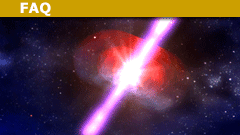
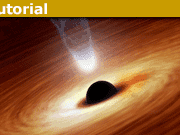

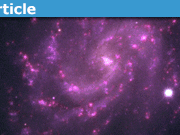
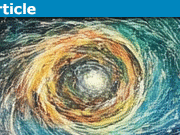

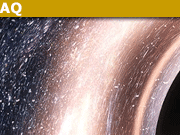


Leave a Reply
Want to join the discussion?Feel free to contribute!